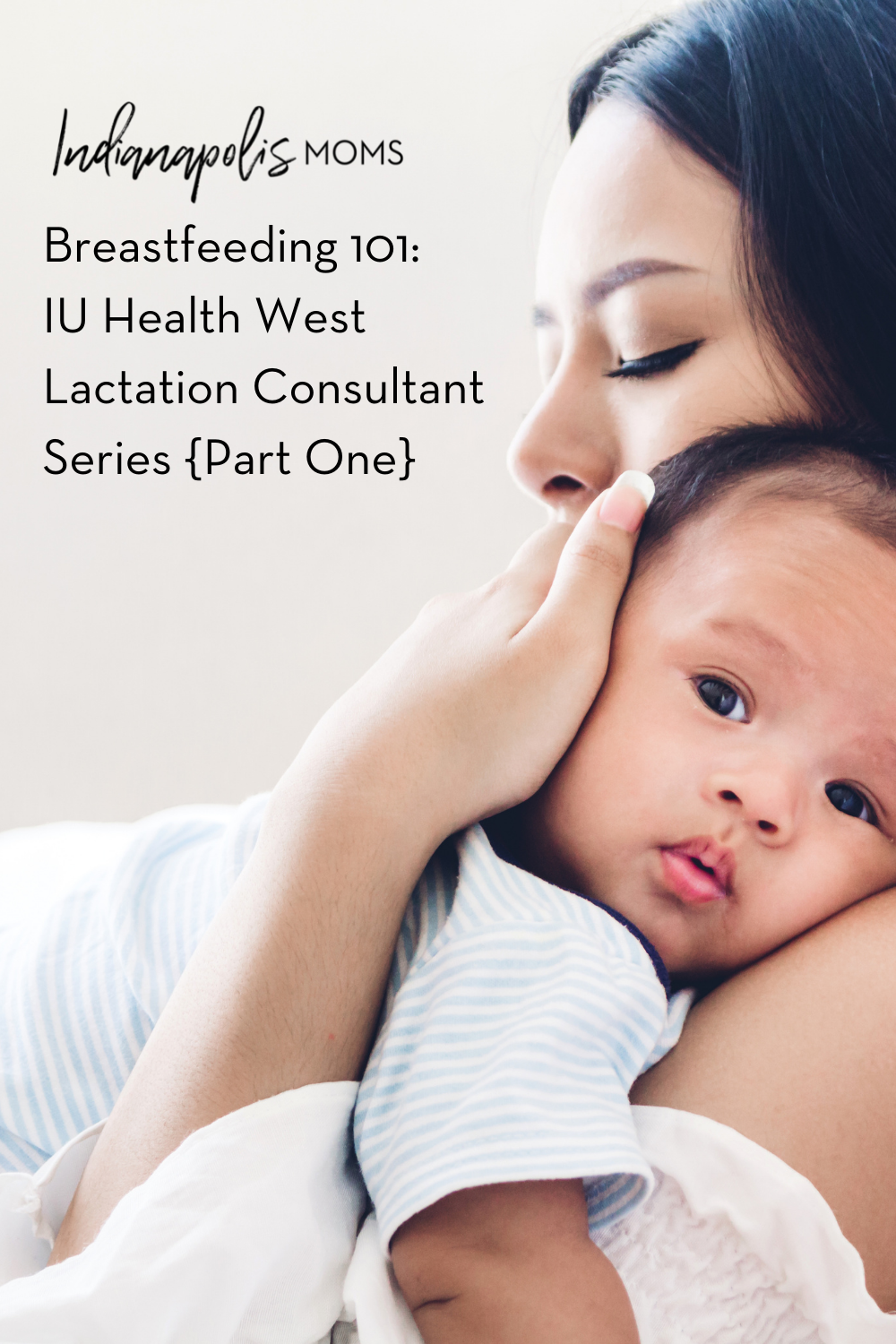Are you expecting your first child? A new mom on maternity leave? Or a veteran mother about to add another child to your family? No matter where you are in motherhood, you will likely have questions about breastfeeding. And we’ve got answers for you! Crecia Montgomery, an International Board Certified Lactation Consultant (IBCLC) at IU Health West Hospital, recently answered our questions about all things breastfeeding. This is the first part of our three-part series on the subject all mothers talk about. Stay tuned for the next two parts in the next two weeks!
 COVID antibodies: How much is passed through breast milk and how much protection does it offer for unvaccinated babies?
COVID antibodies: How much is passed through breast milk and how much protection does it offer for unvaccinated babies?
Information regarding the COVID-19 vaccines and the risks or benefits associated with them for specific populations is still evolving, according to Montgomery. The research is ongoing. According to the CDC, “Recent reports have shown that breastfeeding people who have received mRNA COVID-19 vaccines have antibodies in their breast milk, which could help protect their babies.”
The level of protection provided to babies from the breast milk of vaccinated breastfeeding parents is still under investigation and will require more data. Montgomery says that pregnant and breastfeeding parents are encouraged to discuss the topic of COVID-19 vaccination with their primary healthcare provider who can offer the latest information and help to determine any risks or benefits for each breastfeeding mom and baby.
Are there any pros/cons to using a nipple shield?
Montgomery says that yes, there are both pros and cons to nipple shield use. “Many different opinions exist among lactation professionals about when (if ever) and how long nipple shields should be used”, says Montgomery. “A nipple shield can be a useful tool when used appropriately in specific situations under the guidance and support of a lactation specialist. These situations may include a baby born prematurely, for flat/inverted nipples, for the protection of very sore/damaged nipples, and in some cases of tongue/lip ties where getting a deep latch can often be difficult.”
If you haven’t heard of nipple shields, they help with latching by extending the nipple and keeping it extended without requiring strong, continuous suction by the baby to hold the nipple deep into their mouths. They provide a way to get a baby latched and suckling at the breast at times when that process may otherwise be much more difficult or painful.
According to Montgomery, the risks of using nipple shields include inappropriate fitting and incorrect use, the possibility of decreased milk transfer leading to decreased milk supply, increased risks of plugged ducts or mastitis, and difficulty weaning baby from the nipple shield back to direct breastfeeding. If a mom is having difficulty latching the baby, working with a board-certified lactation consultant (IBCLC) or another practitioner skilled in lactation support can provide information, guidance, and assistance with optimal positioning and latching baby to the breast. They can also assess if temporary use of a nipple shield would be beneficial and provide guidance about how long to use one and how to begin the weaning process.
How long should a baby nurse at each feeding?
The short answer is until they are finished. The length of breastfeeding sessions can vary widely from baby to baby and even for the same baby at different feeding times, says Montgomery. “It is not uncommon for the range to be anywhere from about ten minutes to 40 minutes or so, and some babies will even fall outside of that estimate. It is recommended that moms are taught to recognize early feeding cues in their babies and to offer the breast on demand when the baby demonstrates those cues.” She continues by saying the baby should be allowed to nurse on the first breast until they are finished and then be offered the second breast. Feeding at the second breast is optional and should be based on the baby’s demand in most cases. Moms should alternate the breast that they offer first at each feeding.
Support Groups/Services – Are there any breastfeeding support groups or services you recommend?
“Through our partnership with IBCLCs across the IU Health organization, we offer support to new moms through a variety of breastfeeding classes as well as one-on-one support from our experienced lactation specialists where moms can ask questions and get helpful tips for breastfeeding success,” says Montgomery. If you have any questions, please call the IU Health West Hospital Lactation Department at 317.217.3639.
Stay tuned for Part Two of our series where we will answer your questions on formula supplementing, how to handle a gassy baby while you breastfeed, and tips on using the Haakaa!
 About Crecia Montgomery (IBCLC)
About Crecia Montgomery (IBCLC)
Crecia Montgomery is an International Board Certified Lactation Consultant (IBCLC) at IU Health West Hospital. She is a 2003 graduate of the Indiana University School of Nursing. Her nursing experience includes pediatrics and labor and delivery prior to becoming certified in lactation, where she has worked since 2016. Crecia has three sons and one daughter, absolutely loves baseball, and is a huge San Diego Padres fan.
Indiana University Health
Named among the “Best Hospitals in America” by U.S. News & World Report for 22 consecutive years, Indiana University Health is dedicated to providing a unified standard of preeminent, patient-centered care. A unique partnership with Indiana University School of Medicine – one of the nation’s leading medical schools – gives our highly skilled physicians access to innovative treatments using the latest research and technology. Learn more at iuhealth.org.










